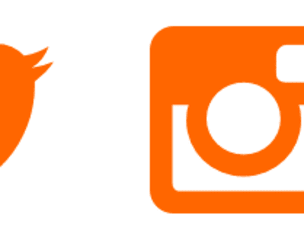Brand loyalty: How to develop it with affiliate marketing
Written by Emma Sharp on 12 minute read
A brand is only as successful as the number of customers it can attract and, more importantly, keep.

Read on to learn what brand and customer loyalty are and their importance when marketing for affiliates.
What is brand loyalty?
Brand loyalty is the commitment of customers to a particular brand due to their levels of trust, the brand’s values and the quality of products. For example, when looking for a new mobile device, many people will automatically lean towards Apple products because of their reputation for innovation and quality and not consider alternatives that may offer better value or performance.
A brand is only as successful as the amount of customers it can attract and, more importantly, keep. With studies showing that small businesses experience repeat customers spending 67% more than new customers, the rewards are worth the effort of building valuable relationships. For advertisers, building strong links with their customer bases can result in engagement that grows in value as people return time and time again.
Why is loyalty so important for a brand?
Brand loyalty is not only important for customer retention, it can also have a significant impact on growth. Enhanced brand loyalty can lead to an increase in word-of-mouth recommendations and referrals - boosting revenue without additional advertising spend.
Here are some benefits of building brand loyalty:
- Competitive advantage — Once brand loyalty has been established it can be hard to break, even if competitors are offering good value or newer products, customers are still likely to choose the brand they trust.
- Recommendations — Customers with brand loyalty are more likely to recommend to their friends and family, potentially leading to a cycle of increased loyalty and additional recommendations.
- Retention — Typically, brand loyalty results in retention and repeat purchases, boosting customer spend and growth.
What is customer loyalty?
Simply put, customer loyalty is when a customer builds a positive association with a product or brand based on value for money and the customer service experience.
Developing this level of trust and demonstrating an understanding of the customer’s evolving needs can be challenging, but results in a customer base that is consistent and less volatile than new customers.
Why is customer loyalty important?
Building customer loyalty has numerous benefits, not least the fact that the chance of repeat purchases significantly increases. Based on the 2023 data, Smile.io has estimated that there is a 27% chance of a customer returning after one purchase, increasing to 49% after two purchases and then 62% after a third.
With such potential, it’s also key to making sure that there’s demand for those key sales periods such as Christmas, Black Friday, and Cyber Monday.
Here are just some benefits of building customer loyalty:
- Word-of-mouth referrals — if a customer is happy, they will recommend you to others, and that means free marketing for your brand.
- Increased trust — even the most well-known brands need to earn the trust of their customers. If you can nurture the ones you already have, then you can create for customers a sense of security that they don’t want to lose by going elsewhere.
- Increased awareness — a happy customer who wants to shout about their positive experience leads to glowing reviews, social media posts showing off their purchases, and potentially extra followers on your social media accounts too.
- An audience to analyse — by gaining a real, authentic audience that is ready to respond to your products, services, and posts, you can get a clearer idea of what your target market is interested in.
How to develop brand and customer loyalty
No matter how well a customer fits into the above profiles, every part of your brand has a role to play in securing their loyalty. For example, one customer may be most interested in your deals, but if redeeming an exclusive offer means navigating a buggy website or facing a disinterested customer service team when issues arise, even the most generous discount may fall flat.
Be blatant about rewarding loyalty
Most people are sure to have a few loyalty cards in their wallet. People like being rewarded for their time and money, so make it easy for customers to know when and how they’ll be rewarded for their loyalty to you. Whether it’s a free cup of coffee or a points system they can redeem as purchases, making an easy-to-join loyalty programme will give customers plenty of reasons to return.
Align your brand values
People stay loyal to brands for different reasons, and it's not always the obvious ones like price. In fact, studies have shown that one of the most important factors is sustainability, with 78% of the 22,000 people surveyed for DWF Group’s Consumer Trends 2024 survey saying "they want companies to play a more significant role in securing a sustainable future". At Awin, we have picked out a list of 10 sustainability-centric publishers, each making strides in diverse, impactful ways, who Awin advertisers can partner with.
The change in people’s buying mindset is something businesses must keep up with, and in an authentic way, or you may risk losing trust. On that note…
Be trustworthy and authentic
This goes for your general marketing — don’t over-promise or say you’re delivering on things you can’t — but it also goes for other channels. Your customer service should always show you understand the value of authenticity, so customers are engaged with a real person who talks to them like a human and doesn’t just read off a script. You should prove you know and value your customers with newsletters and social media posts where you are always transparent and honest.
Stay up-to-date with customer trends
Of course, maintaining customers means you always have one eye on your customer base, but you also want to look at the wider picture. What are the trends of the moment? What new brands and products might tempt them away? Where is your brand falling short in the areas you know your customers value?
Always work to evolve your brand in the best interest of your customers, by fitting not just their budget (through both product pricing and payment options, such as Klarna), but also their values and lifestyle, you can become a trusted, irreplaceable part of their shopping journey.
Consider loyalty marketing
A huge portion of company funds for marketing goes towards acquisition instead of nurturing customers they already have. Change this by making your current customers an equal priority. Consider a rewards app, an exclusive web portal, or newsletter that has a little more heart to let your customers know they really are valued.
What is a customer loyalty programme?
A customer loyalty programme is, as the name suggests, a programme that rewards customers for shopping with you repeatedly and a key sort of loyalty marketing. There are different models your customer loyalty programme can take, but the goal is the same — to generate brand loyalty by encouraging customers to return time and time again.
Types of customer loyalty programmes
Customer loyalty programmes come in a variety of forms, but to be successful, they must all encourage the customer with the promise of increased value and convenience, which can in turn contribute to increased trust.
1. Points-based loyalty programmes
A tried and tested model, a points system rewards customers by giving them points with every purchase. Once they have accumulated enough points, they can use them to purchase an item. While many global brands use this approach, it can also mean a lack-lustre points system is something customers will quickly realise is below par. Make sure your reward points are worth the effort of collecting them, for example, 1 point per 10p, rather than a convoluted system (e.g. points that contribute to a coupon which can be redeemed within a select period) that may put customers off.
2. A paid loyalty system
This one does require a bit more groundwork in order to build enough trust that customers are willing to pay for a premium experience. However, these loyalty systems are able to deliver on multiple fronts. They can increase convenience through things like a discounted yearly charge for unlimited delivery, allowing for exclusive online portals and deals, and priority access to help, sales, and other offers. A paid system needs to give customers value for money and deliver on the sense of exclusivity expected of a fee-based programme.
3. A laddered or tiered system
This is most commonly seen in things like frequent flyer programmes where the more customers spend over time, the more they are rewarded as they move up the ranks of a tiered system. High-value purchases like flights and accommodation often use this model, as the competition in terms of price and convenience are widely the same, and customers must be tempted in different ways.
4. Brand partnership programme
As demonstrated by the Wolverhampton Wanderers’ brand partnership programme, a partnership programme rewards customers with perks that stretch beyond your own offerings. This also helps build customer trust, as these partnerships can help boost your credibility through collaborations with brands that customers may already fully trust and rely on. It also gives the impression that you truly understand and value your customers and their needs. For example, the Wolverhampton programme recognised that travelling fans may need accommodation, and offered deals based on this need.
How to measure customer and brand loyalty
Measuring customer loyalty can be done in several ways, and most businesses will need to keep an eye on all of the below metrics to make sure their customers remain satisfied.
Customer churn
This is the rate that customers leave your brand i.e. end the possibility of becoming loyal customers. But you should also look at the opposite of churn, known as negative churn — this shows how many return customers you have retained, and you obviously want to keep an eye on this to make sure it stays high. Our Plusnet case study shows how exclusive reward offerings can help slow churn and boost customer retention.
Social media brand mentions
It’s not just about what you say to your customers, what your customers say about you can play a huge role in your retention rate. Keep an eye on social media both for positive and negative mentions, and if a problem crops up, be sure to respond with a solution. This public engagement and willingness to fix problems count as big plusses when it comes to building trust.
Customer retention rate
This refers to precisely how long customers stay with you and is a good metric to watch if you introduce new loyalty marketing tools and want to track their performance. Ideally, this metric should always be steadily climbing.
Customer effort score
This metric measures your customers' satisfaction in clear terms. Most commonly this data is collected through surveys such as follow-up emails that ask customers to rate their experience from 1-10 and share any feedback.
This is an excellent way to see the impact of your business on your customer base in emotional terms and is also extremely valuable when it comes to identifying customer problems, such as UX and UI issues, that could impact your customer’s lifetime value (CLV).
Conduct regular brand surveys
While customer experience is covered in the surveys mentioned above, brand surveys should also be used to assess the reputation of your brand itself.
Understanding how the quality and value of your products and services are perceived, and regularly monitoring how these metrics change, can deliver significant results - a positive brand perception can lead to increased loyalty, higher sales and improved share of the market.
Conversion rates
A conversion rate is the percentage of customers who complete a desired action, such as clicking on an advertisement or subscribing. Depending on the conversion you need to track, this information can give a clear indication of which aspects of your brand marketing content are effective and identify roadblocks on the customer journey.
Having gathered this information, conducting a conversion rate optimisation process will help to identify the actions required to resolve issues and increase conversion rates.
How affiliate marketing can help you build brand loyalty
Happy customers will be more likely to shout about your business and recommend it to others. While reviews and social media posts are priceless for this sort of promotion, advertiser tools can help you connect even more with affiliates and audience members. Similarly, influencer marketing is another customer acquisition strategy through which recommendations can be effectively utilised to enhance brand loyalty - just make sure the cost of this approach aligns with your customer acquisition cost.
By giving them the power to gain more than just points from promoting brands they care about, the customers you already have not only bring brand loyalty value with each repeat purchase, but may also become your secret marketing weapon.
Find out more about Awin’s affiliate marketing platform for retail affiliates and start converting your customers into advocates.



